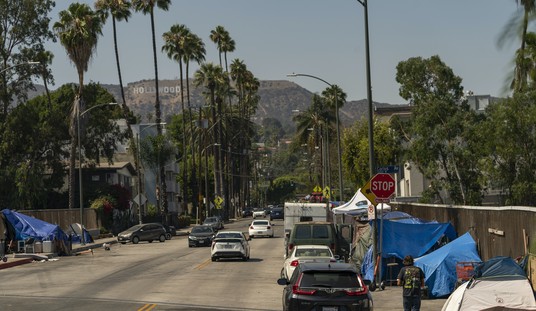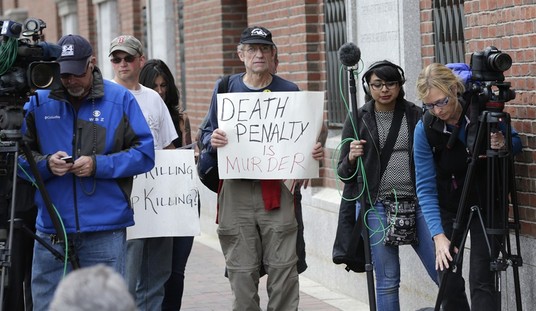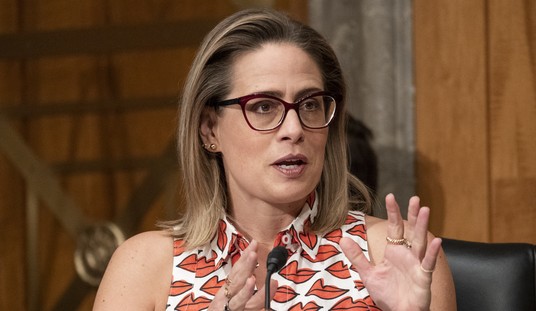Introduction: The President’s Plan
The Central Asian front in what was until recently known as the global war on terror has been visibly deteriorating for some time now. This is in large part a result of neglect by a U.S. government focused on Iraq, and a result of a network of allies (both of permanence and of convenience) who have been inconsistent at best in demonstrating their commitment to aiding the fight to rid that region of terrorists and hard-line militants.
This spring, after nearly two years of campaigning on a platform of withdrawal from Iraq and a refocusing of American efforts on that deteriorating situation in Afghanistan and Pakistan (an area Democrats spent the majority of the Bush years referring to as the location of “the real war on terror”), President Barack Obama unveiled his administration’s Afghan strategy. That strategy is currently being implemented in the region.
President Obama’s opacity about his goals for the Afghan region and his failure to date to provide promised (and long-awaited) metrics by which he will measure success make evaluating his strategy difficult. At a March press conference, Obama said his administration intended “to disrupt, dismantle and defeat al-Qaeda in Pakistan and Afghanistan, and to prevent their return to either country in the future.”
However, while his predecessor, George W. Bush, had at least put forth a rudimentary concept of what success in Iraq — his focus in the GWOT — would look like (a nation that is “at peace with its neighbors, with a representative government that respects the rights of all Iraqis, and security forces sufficient to maintain domestic order and deny Iraq as a safe haven to terrorists”), Obama has repeatedly stopped short of defining success or victory as he sees it in his favored area of the war on terror. He even declared in a late July television interview that he dislikes the word “victory” and doesn’t see that as America’s goal in the region.
The Obama Afghan strategy can be summed up in five points of emphasis.
- Implementing an Iraq-style “surge” of forces in Afghanistan, to be augmented with a so-called “civilian surge” made up of experts in law, agriculture, and other needed specialties;
- Growing the Afghan Security Forces, both police and army, by such numbers and with such speed that they will be able to assume responsibility securing large portions of the country in a very short time;
- Attempting to achieve “reconciliation” with less hard-line members of the Taliban and promoting a more open, honest, and effective Afghan national government;
- Expanding international support for the Afghan mission, a task which includes convincing NATO allies to send more troops to the region to participate in counterterror and nation-building activities, as well as convening regional stakeholders for the purpose of formulating a longer-term strategy for the region and agreeing on an acceptable outcome; and
- Eliminating the growing Taliban and al-Qaeda sanctuaries in Pakistan, while simultaneously promoting democratic order within that fractured, historically unstable Islamic state.
Regardless of the Obama strategy’s likelihood of success — which is difficult to predict, given his unwillingness to define “success” or to seek “victory” — those closely watching the Central Asian front in this conflict should not be surprised if circumstances there begin to worsen in the near term. Even General David Petraeus, commanding general of U.S. Central Command, has acknowledged that the situation in the Afghan theater is “likely to get worse before it gets better.”
Petraeus, who is best known for having snatched success from the jaws of a similarly dire situation in Iraq, is no stranger to such words of warning. As he ramped up the coalition’s efforts in Iraq in early 2007, Petraeus cautioned legislators, members of the Bush administration, and the American public to be prepared for more pitched combat and higher casualty rates within that country as a result of the “surge” in forces and change in strategy he brought to that Middle Eastern war zone.
Now, as the focus shifts eastward, Petraeus is warning those willing to listen not to expect as astonishingly quick or complete turnaround in Afghanistan as the coalition forces under his command achieved in Iraq. This is due, in part, to the vast differences in terrain (both geographic and human), and because the former lacks both the infrastructure and the willingness to accept a sizable and sustained presence of foreign troops that helped make a rapid turnaround in Iraq possible.
Whether or not the situation in Afghanistan will improve after an initial increase in violence and decrease in security will depend on the Obama strategy itself, its authors’ willingness to remain faithful to it in the face of potential frustration, and, of course, its execution by the forces on the ground responsible for putting the administration’s plan into action.
Unfortunately, as the upcoming installments on this topic will demonstrate, Obama’s strategy for the Afghan/Pakistani front in this conflict and his unwillingness to embrace victory as an outcome reflect a lack of understanding about (or, worse, an overall unwillingness to accept) the facts on the ground in the region, the significance of America’s fight there, and the high cost of failure.
Obama’s Afghan Plan, Part I: A “Surge” in Soldiers and Civilians
President Obama’s ongoing “surge” in the number of U.S. forces in Afghanistan has been public knowledge since its conception. In fact, the roots of the plan can actually be found in the final days of the Bush administration, which saw a greater emphasis on the Afghan front in what was then known as the global war on terror than had been placed there since before the coalition invasion of Iraq in late 2002. The initial thought, as publicly announced by Defense Secretary Robert Gates last November, was to send approximately 30,000 additional U.S. troops to augment the 38,000 already operating in the expansive, mountainous country.
Shortly after taking office, Obama ordered the number of troops deployed as part of that “surge” to be cut nearly in half, to 17,000. This combined force of soldiers and Marines will be assigned to areas of the country along the border with Pakistan, where the coalition has the least control and terrorist forces are at their strongest. They will be tasked with “preventing a return of al-Qaeda and its allies” to the area and with providing space and security for the national government to expand its hegemony into this largely warlord- and Taliban-controlled region of Afghanistan.
In addition to this 17,000-troop counterinsurgency force, Obama has assigned 7,000 more troops to Afghanistan to perform other critically important tasks. In February, the 3,000 soldiers that make up the 10th Mountain Division’s 3rd Brigade Combat Team (BCT) deployed to two Afghan provinces near Kabul, where they are operating out of coalition outposts in an effort to tamp down the insurgency-riddled east-central portion of the country. An additional 4,000 soldiers are now awaiting deployment to the region to serve as embedded Afghan Security Force Training Teams.
In Need of Reinforcement
There is no question that the coalition forces currently in Afghanistan, who are fewer than 30% in number than their counterparts assigned to Iraq, are in need of reinforcement. However, the size of the force being deployed to augment those already in theater is disappointingly small. Not only is the total strength of Obama’s 24,000-troop “surge” less than the number necessary to fill up half an American football stadium, but the total number of U.S. troops in Afghanistan, once these deployments are completed, will stand at just over 60,000 — less than half the strength of U.S. troops in the significantly smaller and more cohesive country of Iraq before General David Petraeus’s “surge” was implemented there in 2007.
In fact, given that Afghanistan’s surface area is 120% that of Iraq with exponentially more difficult terrain (think of Iraq as California and Afghanistan as Texas plus the Hindu Kush mountain range), a “surge” of 24,000 troops is likely far too small to make any measurable difference in that country’s day-to-day development and security, even if they are employed correctly.
Further, the specialists being recruited for deployment to Afghanistan as part of Obama’s so-called ‘civilian “surge” — currently estimated at about 400 — are also likely far too small in number to accomplish what will be expected of them. If properly employed, this small number of specialists, who bring expertise in agriculture, law, and other areas to a region desperately in need of their assistance, could do a great deal of good in the few areas they can influence.
However, like the so-called “surge” of troops in Iraq and Afghanistan, these specialists will need to be pushed out of the national and regional levels and into the expansive state’s agrarian, tribal localities in order to be effective — something career bureaucrats and government employees are notorious for their reluctance to do (for evidence of this, witness the revolt by bureaucrats within the State Department when faced with the mere prospect of deployment to Iraq’s secure International Zone in 2007).
Real Shift in Strategy Needed
Every bit as important to bringing about positive change within Afghanistan than the size of any troop increase is a shift in focus and tactics by those forces within the country itself. The core additional force of 17,000 soldiers and Marines will be placed where help is needed most (the largely terrorist-controlled provinces of Helmand and Kandahar) and will be presented the unenviable task of battling to wrest control of the area from entrenched enemy fighters and to forcibly shift the form of subsistence practiced there from opium poppy production to wheat cultivation (ostensibly with the assistance of some of those civilian agriculture specialists).
However, that is only one part of a necessary overall shift in Afghan strategy — something which the Obama administration, with its use of “counterinsurgency” as a largely meaningless buzzword in its strategic literature, has shown little sign of embracing.
In fact, given his public statements about the positive shifts in Iraq, it appears the new president has joined a large portion of the American populace in falling prey to the idea that the early 2007 “surge” in American troops deployed to that country was the bromide that squelched the terrorist resistance there and gave the Iraqi people the time, the resources, and the will to pull their ailing country together.
This meme, which was pushed by a mainstream media that sold the comprehensive strategic overhaul brought to the table by General David Petraeus and okayed by then-President Bush as being nothing more than a shipping-out of a few thousand more soldiers, was and remains an absurdly simplistic description of the massive changes made in order to provide the Iraqi people with both the security and the incentive to make the giant strides they have in the last two years.
Unfortunately, many conservative commentators desirous of aiding the rebuilding effort fell into this trap as well, adding to the overall perception by referring to the implementation of a brilliantly-executed counterinsurgency strategy (COIN) simply as “surge” — something which did little to disabuse the simplistic public belief that little actually changed on the ground in Iraq other than the uniformed U.S. headcount.
Halfhearted Approach Means Failure
If his senior military commanders, along with the mercurial Gates, cannot disabuse the new president of this notion and convince him to conduct a full strategic review and overhaul of the Afghan effort, Obama’s “surge” will be the antithesis of his predecessor’s, achieving few if any strategic or tactical gains and instead sending 20,000 more moving targets to this eastern combat zone.
If Obama’s “surge”ends up being less than an overwhelming success, even if it is due to a failure to implement a new, winning strategy for those troops to deploy in support of, it is likely that the calls for a mass withdrawal from the war-torn area and the key front in the war on terror will escalate.
A significant portion of the stated rationale for this renewed call for surrender will likely be the claim that the U.S. exactly repeated the strategy utilized in Iraq to such great success, and the fact that it didn’t work in Afghanistan proves that war to be “unwinnable.” Unfortunately, this claim’s extreme distance from the truth will likely be lost in translation and ignored in future messaging from an administration that has shown itself to be unwilling to endure either negative news or negative press.
Obama’s Afghan Plan, Part II: Growing the Domestic Security Force
The small number of trained, reliable, and effective Afghan National Security Forces presents a serious holdup in the effort to secure Afghanistan, and to turn responsibility for that security over to domestic forces — the quickest route to a successful American exit from the war-torn country. President Obama’s Afghan strategy makes note of this critical shortcoming, However, it offers little to actually bring about that needed increase in trained, effective Afghans capable of defending their own tribal areas and participating in the defense of the Afghan nation.
Obama’s stated plan is to accelerate the training of Afghan army and national police members over the next three years. However, his goal of 134,000 soldiers by 2011 is simply a continuation of Bush policy put in place late last year, and his target of 82,000 national police represents an expansion of the 76,000-strong ANP force by a mere 6,000 members over three years.
Once in position, the 4,000 U.S. soldiers currently awaiting deployment to the region to serve as embedded Afghan Security Force Training Teams will help move in the direction of that goal. This “surge” in training team personnel has been desired for some time now by commanders on the ground in Afghanistan, and their deployment should do a great deal to multiply the raw numbers of Afghan Security Forces going through some sort of formal training before being asked to take on the dedicated terrorist threat to their tribes and their country.
However, though he has stated an intention to begin turning over responsibility for regional and national security to these Afghan forces as soon as possible, Obama’s target numbers are far too small to effectively achieve what he expects of them, and his timetable is entirely too short to be realistic. Further, it is an open question when (and if) the Afghan economy will attain the size and stability necessary to support a professional national security force without the foreign funding it is currently receiving.
As General David McKiernan, the former commander of U.S. forces in Afghanistan, noted earlier this year, a fully manned, well trained, professional Afghan National Security Force is likely “years away,” even if the U.S. and its allies are pouring every possible resource into the recruiting, training, and equipping process.
One need only look at Iraq circa 2005 to see the perils of turning loose an untrained, unvetted, and unready national security force without proper guidance and support. That move was an unmitigated disaster, as might be expected when members of a police and security force tasked with day-to-day security and anti-militia operations are inadequately trained and equipped or — even worse — on the payroll of terrorist and militant groups, assisting in plots against coalition forces, or acting as roving nocturnal death squads.
The Afghan National Police are suffering from many of the same problems the Iraqi force faced from 2004-2006. A lack of proper training and materiel, institutional corruption, and attrition as a result of inconsistent compensation and a high rate of being targeted by the Taliban have left the decently-sized police force struggling to accomplish its assigned duties, which include performing counternarcotics, counterterrorism, and border policing operations. It is up to the Obama administration to reverse this course before the Afghan police, which are already viewed “as a source of fear rather than a source of security” by many of those they exist to protect according to an International Crisis Group report, devolve into a mirror image of the nightmarish organization the Iraqi police became only a few years ago.
It falls to Obama and his military leaders in Afghanistan to ensure the Afghan Security Forces are properly trained and supervised, lest, as in Iraq and as in the West Bank (where the Clinton administration provided weapons and training to PLO security forces who ended up becoming some of the most efficient killers of Israelis during the second intifada), the coalition effort to provide training and arms to a domestic Afghan security force ends up simply supplying and training a more efficient insurgency.
One potential silver lining in the struggle to stand up an Afghan security force that is capable of performing its mission effectively is the Afghan Public Protection Force (APPF), a growing group of civilians who have volunteered to assume responsibility for local tribal security. This program, which was recently begun in Afghanistan’s eastern Wardak province, is akin to that which began in Iraq as the Concerned Local Citizens program. The latter blossomed into the Sons of Iraq movement, a security force 72,000 strong that proved instrumental in driving terrorists from threatened areas and securing Iraqi villages and cities.
The only mention of the APPF in the Obama administration’s Afghanistan strategy white paper is found in the context of concerns about securing enough international funding to be able to “support” this volunteer force financially. However, the APPF has the potential to be far more than just another drain on allied resources. If it can manage to be even a fraction as successful as the Sons of Iraq movement was, the APPF could allow its country to reap benefits that include, but are not limited to, an increase in the amount of time allowed for the full training and operational preparation of those additional security forces.
If the Obama administration is serious about turning over Afghanistan to a stable, well-trained domestic security force, it must resist putting timetables on the training and deployment of the ANSF, instead striving for quality now and quantity later. They should focus on ensuring that the necessary resources are available, and they should recognize the most important of these resources are people and time.
Enough conventional combat troops must be present in Afghanistan to conduct counterinsurgency operations and to contribute to the development of the Afghan forces by over-the-shouldering them on real-world operations, and enough Special Forces and conventional trainers must be present to take ANSF candidates from square one to fully-trained; enough time and patience must be allotted to the cause to enable it to succeed.
Unfortunately, given President Obama’s (and his congressional allies’) impatience with the seemingly slow pace of Iraqi Security Forces’ development to date, the latter of those resources — time — will likely be the most difficult resource for Obama to provide, despite its being by far the one most critical to success.









Join the conversation as a VIP Member